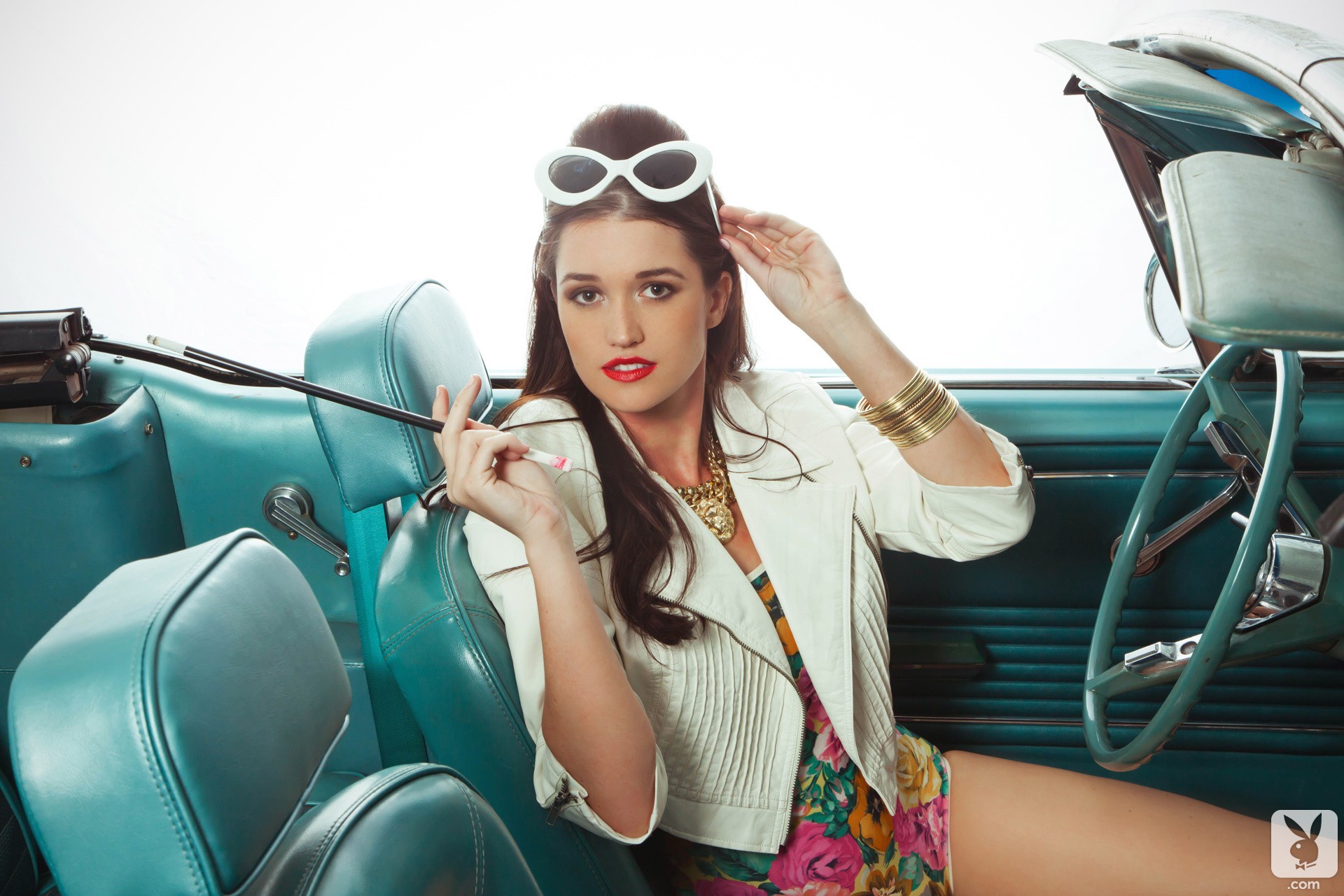The iconic magazine Playboy has long been associated with provocative and sensual photography, showcasing some of the most renowned models and photographers of their time. While Playboy is perhaps best known for its centerfolds and explicit images, the magazine's photographic content extends far beyond that, offering a rich visual history that has influenced art, fashion, and popular culture.
In this article, we delve into the world of Playboy photography, exploring its evolution, the notable photographers and models who graced its pages, and the impact it has had on visual media and societal perceptions.
The Early Days: Defining an Era

The birth of Playboy magazine in 1953 marked a significant moment in the history of publishing and visual arts. Founded by Hugh Hefner, Playboy aimed to challenge the conservative norms of the time, offering a sophisticated and playful take on adult entertainment. The magazine’s early issues set the tone for what would become its signature style: high-quality photography, clever writing, and an air of sophistication.
The first issue, featuring Marilyn Monroe on the cover, was an instant success. It sold out within weeks, and the demand for more Playboy content skyrocketed. This early success can be attributed to a combination of factors, including the allure of Monroe's image, the magazine's high production values, and its rebellious nature, offering a glimpse of sexuality that was otherwise taboo.
During the 1950s and 1960s, Playboy featured a diverse range of photographic styles. From fashion-forward spreads showcasing the latest trends to intimate black-and-white portraits, the magazine offered a platform for photographers to experiment and push boundaries. Notable photographers like Mario Casilli, Ed DeLong, and Bunny Yeager contributed to the magazine's early visual aesthetic, capturing the essence of the era's glamour and sensuality.
| Photographer | Contribution |
|---|---|
| Mario Casilli | Known for his dramatic lighting and artistic compositions, Casilli's work often featured a surreal, dreamlike quality. |
| Ed DeLong | DeLong specialized in fashion photography, bringing a high-fashion aesthetic to Playboy's pages, often shooting in exotic locations. |
| Bunny Yeager | A former model herself, Yeager brought a unique perspective to her photography, capturing models in natural, unposed settings, often outdoors. |

The Centerfold Phenomenon

While Playboy featured a diverse range of photographic content, it is perhaps most synonymous with its centerfolds. The centerfold, a two-page spread in the middle of the magazine, typically featured a nude or semi-nude model, often in a provocative pose. This iconic feature became a hallmark of the magazine and a highly anticipated element for its readers.
The centerfolds of the 1960s and 1970s featured some of the most iconic models of the era, including Cybill Shepherd, Farrah Fawcett, and Patti McGuire. These women became household names, their images synonymous with the magazine's brand. The centerfolds not only celebrated the female form but also served as a platform for artistic expression, with photographers and models pushing the boundaries of what was considered acceptable in mainstream media.
One notable centerfold from this era is that of Lena Söderberg, whose image became an iconic symbol of the digital age. Her centerfold, shot by photographer Ernie Wright, was used as a test image for the development of the first digital scanner, and its digital reproduction has since become one of the most widely distributed images in the world.
The Golden Age of Playboy Photography
The 1970s and 1980s are often considered the golden age of Playboy photography. During this time, the magazine’s photographic content reached new heights of artistic merit, attracting some of the most talented photographers and models in the industry.
Photographers like Herb Ritts, Arthur Elgort, and Francesco Scavullo brought a new level of sophistication and artistic vision to the magazine's pages. Their work often blurred the lines between fashion, art, and erotica, showcasing a fusion of styles that elevated Playboy's visual aesthetic.
Models like Karen McDougal, Anna Nicole Smith, and Pamela Anderson became household names, their images synonymous with the magazine's brand. These women, often referred to as "Playmates," represented a new era of female empowerment, using their platforms to challenge societal norms and break down barriers.
| Photographer | Notable Works |
|---|---|
| Herb Ritts | Known for his iconic black-and-white portraits, often featuring supermodels like Cindy Crawford and Naomi Campbell. |
| Arthur Elgort | A fashion photographer known for his energetic, candid style, often shooting on location with natural light. |
| Francesco Scavullo | Scavullo's work was characterized by dramatic lighting and an intimate, sensual style, often featuring celebrities and supermodels. |
Beyond the Pages: The Impact of Playboy Photography
The influence of Playboy photography extends far beyond the magazine’s pages. Its visual content has had a profound impact on the world of art, fashion, and popular culture, shaping societal perceptions and influencing future generations of photographers and models.
Influencing Art and Fashion
The artistic merit of Playboy photography cannot be overstated. The magazine’s photographers often experimented with different styles and techniques, pushing the boundaries of what was considered acceptable in visual media. This experimental approach influenced the work of contemporary artists and photographers, inspiring a new wave of creativity and innovation.
In the world of fashion, Playboy photography played a significant role in shaping trends and styles. The magazine's fashion spreads often featured the latest designer wear, showcasing the work of up-and-coming designers and setting the tone for fashion trends. The fusion of fashion and erotica in Playboy photography created a unique aesthetic that continues to influence modern fashion photography.
Challenging Societal Norms
Throughout its history, Playboy has been at the forefront of challenging societal norms and perceptions. The magazine’s photographic content, particularly its centerfolds, offered a platform for the celebration of the female form, challenging the objectification of women and promoting a more positive, empowered view of sexuality.
The magazine's focus on diverse beauty standards also played a significant role in challenging societal norms. Playboy featured models of various ethnicities, body types, and ages, sending a powerful message of inclusivity and diversity. This inclusive approach helped to shift societal perceptions and promote a more accepting and diverse view of beauty.
A Lasting Legacy
The legacy of Playboy photography is undeniable. The magazine’s visual content has left an indelible mark on the world of art, fashion, and popular culture. Its impact can be seen in the work of contemporary photographers and models, who continue to draw inspiration from the iconic images and styles of the past.
Today, Playboy continues to evolve, adapting to the changing landscape of media and societal perceptions. While the magazine's explicit content has taken a backseat, its commitment to celebrating the female form and promoting diversity remains strong. The magazine's visual content continues to push boundaries, offering a platform for artistic expression and challenging societal norms.
Conclusion

The history of Playboy photography is a rich and complex narrative, spanning decades and influencing countless lives. From its early days as a rebellious force challenging societal norms to its golden age of artistic excellence, the magazine has left an indelible mark on visual media.
While the world has evolved, and societal perceptions have shifted, Playboy's legacy remains a testament to the power of visual storytelling. Its photographic content, with its blend of sensuality, sophistication, and artistic merit, continues to inspire and shape the world of art, fashion, and popular culture.
What made Playboy photography unique in its early years?
+In its early years, Playboy photography stood out for its combination of high-quality production values, artistic merit, and a rebellious spirit. The magazine offered a platform for photographers to experiment with different styles and techniques, pushing the boundaries of what was considered acceptable in visual media at the time.
How did Playboy centerfolds become iconic?
+The centerfolds became iconic due to their highly anticipated nature and the fact that they featured some of the most renowned models of the time. These images often served as a platform for artistic expression, with photographers and models pushing the boundaries of what was considered acceptable in mainstream media.
What was the impact of Playboy photography on the fashion industry?
+The fashion spreads in Playboy had a significant impact on the industry, showcasing the latest designer wear and setting trends. The fusion of fashion and erotica in Playboy photography created a unique aesthetic that continues to influence modern fashion photography.